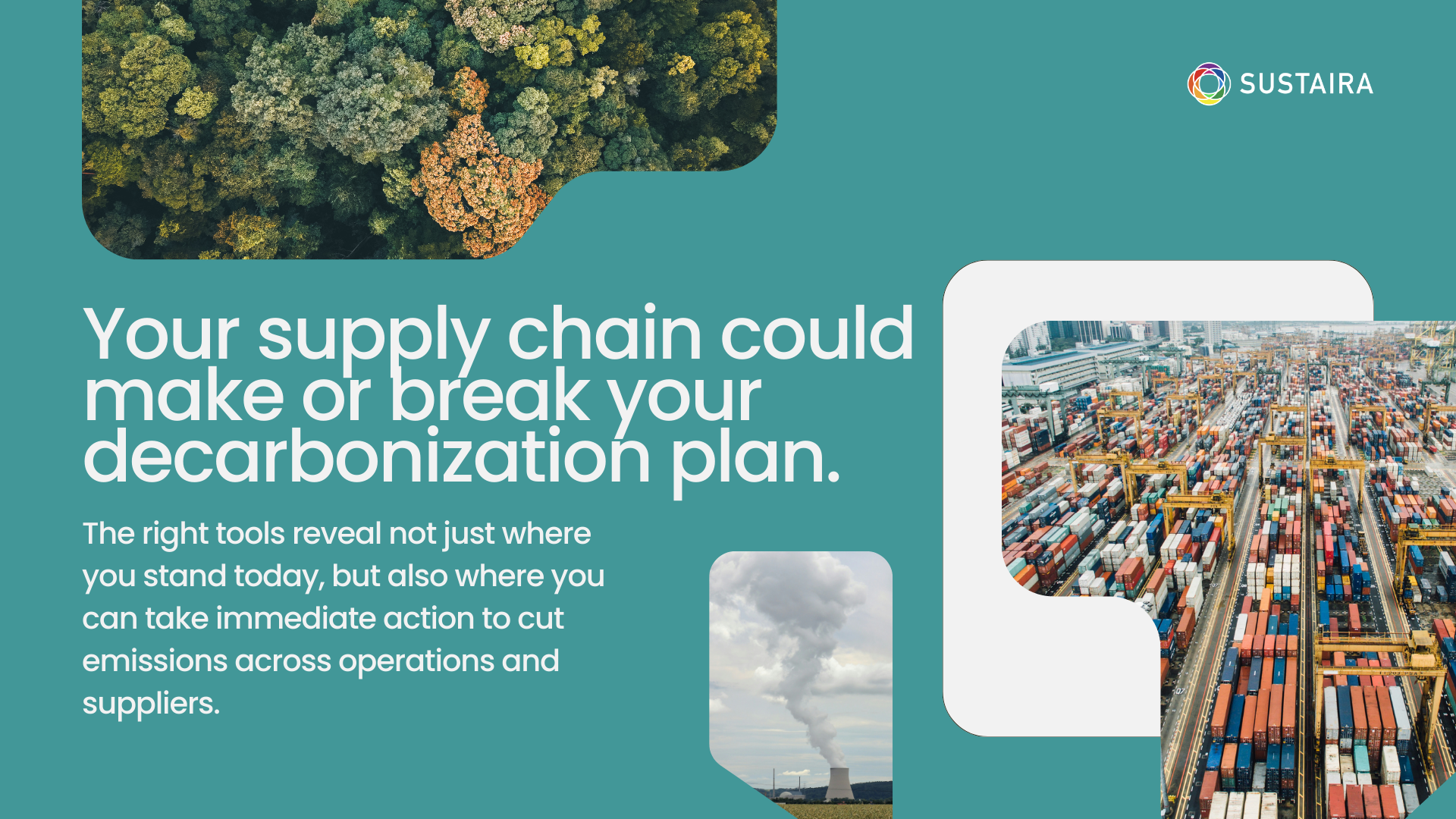Carbon Accounting for Net Zero: How Enterprises Can Turn Data into Decarbonization
Reaching net zero emissions is now a business-critical priority, but for many large organizations, progress is slowed by one recurring problem: data. Scattered systems, manual processes, and outdated reports leave sustainability leaders without the visibility they need to make informed decisions.
Investors, regulators, customers, and employees are demanding more than long-term pledges; they want proof of real progress. This requires more than compliance reporting. It demands a robust carbon accounting system that delivers clarity, accuracy, and actionable insight across Scope 1, 2, and 3 emissions.
Why Carbon Accounting Matters
Without reliable carbon accounting, organizations struggle to answer fundamental questions: Where are we now? Where can we cut emissions most effectively? How do we balance decarbonization with financial performance?
Traditional reporting cycles can’t keep up. By the time data is compiled, the business reality has already shifted. This lag creates a disconnect between sustainability goals and the day-to-day operational decisions needed to reach them.
Modern carbon accounting changes that. By consolidating emissions data into a single source of truth, enterprises gain real-time visibility across operations and supply chains. This enables faster, more confident decision-making, reduces the risk of errors, and turns sustainability from a reporting burden into a driver of business value.
From Data to Decisions with Sustaira
Sustaira’s Carbon Accounting solution is built to close the gap between reporting and action. It gives sustainability leaders a clear, centralized view of their emissions baseline and ongoing performance. Scope 1, 2, and 3 emissions are tracked with precision, data is aggregated in real time, and teams can collaborate seamlessly without waiting for quarterly or annual reporting cycles.
This creates more than compliance. It creates decision-ready insight. Leaders can finally connect emissions data to operational strategy and financial outcomes, ensuring that sustainability efforts drive measurable environmental and business impact.
Planning for Net Zero with the Sustainability Planner
Visibility is only the first step. Once an organization understands its carbon footprint, the next challenge is deciding which actions to take. Sustaira’s Sustainability Planner addresses this by modeling efficiency projects, renewable energy initiatives, and operational changes against both environmental and financial metrics.
Using live energy and gas pricing, the Planner shows payback periods, annual savings, required investments, and emissions reductions instantly. Leaders can compare different pathways, test scenarios, and prioritize measures that deliver maximum impact for both climate and business performance.
This shift, from backward-looking reporting to forward-looking strategy, empowers organizations to transform net-zero goals into realistic, data-driven roadmaps.
Take a Tour of Sustaira
SBTi Sustainability Launchpad
Why Now
With frameworks like SBTi 2.0 raising accountability standards, and as we outlined in Decarbonization isn’t just a goal. It’s a business imperative, enterprises are under more pressure than ever to prove progress. Carbon accounting and sustainability planning are no longer optional. They are the foundation of credible climate strategy.
Organizations that act now will not only secure compliance but also strengthen competitiveness, investor confidence, and long-term resilience.
Building a Foundation for Net Zero
Carbon Accounting and Sustainability Planning are two essential steps in the same journey. One establishes a clear, reliable emissions baseline. The other transforms that insight into strategic action. Together, they enable organizations to move decisively from compliance to competitiveness, and from ambition to measurable impact.
With Sustaira, enterprises gain the clarity, flexibility, and confidence to build a decarbonization strategy that works today and for the long term.
Executive Webinar: Mastering the Journey
The session explore how to:
Build credible emissions baselines
Align targets with business growth
Standardize and connect data across systems
Engage stakeholders inside and outside the organization



